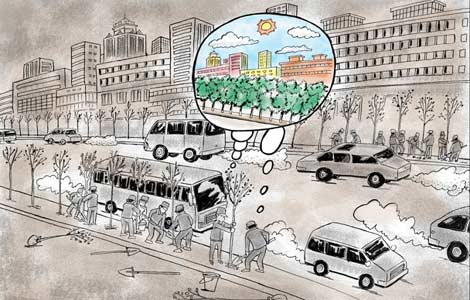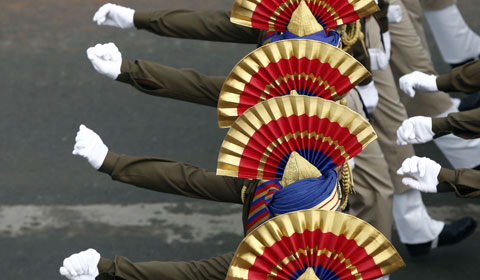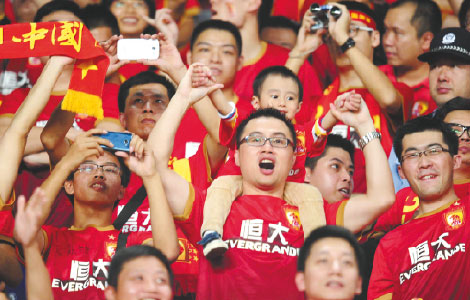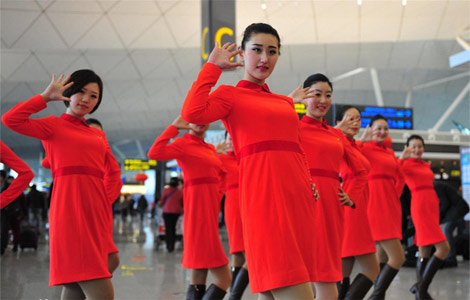Experts preach walking to cure traffic headaches
Updated: 2014-01-24 17:33
By By HU YONGQI in Kunming (China Daily USA)
|
|||||||||
Planning and design experts from Portland, Oregon suggested Kunming promote walking and cycling to lower carbon emissions and alleviate traffic congestions during rush hour, after a four-day visit to the capital of Southwest China's Yunnan province.
The visit was part of the USChina EcoPartnership agreement signed by the cities in May 2012. The cooperation pact by the Oregon city of Portland and Kunming focuses on bicycling systems, low-carbon development, ecological protection and tourism development around Dianchi Lake, and transitoriented development in the Spring City.
The partnership originated from the US-China Framework for 10-Year Cooperation on Energy and Environment signed in 2008.
In October, Portland Mayor Charlie Hales met with visiting Kunming Mayor Li Wenrong to discuss low-carbon measures including trails for bikes and bike-sharing near subway stations.
In the most recent meeting, the Portland delegation and project managers and Kunming’s top urban planning and design authorities aimed to reach a consensus on the new policy.
Denver Igarta, planner of the Portland Bureau of Transportation, said experts and designers from Portland visited a river trail for bicycles along the Panlong River and surrounding areas of Dianchi Lake. “The guiding principles that we borrowed from Europe — safety, comfort, attractiveness, connectedness and directness — mean walking and cycling must be within a short distance and safety should be ensured,” he said.
He called for a complete network for bicycles and pedestrians and urged experiments to find new ways to handle the two groups. “We'll see how the practices in Portland fit the context of Kunming and modify drivers' behavior and habits to ensure safety,” Igarta said.
Figuring out how to cross streets safely has been a headache for many pedestrians and cyclists in Kunming. The Portland experts' suggestions included setting up yellow flashing lights or buttons for pedestrians' use.
Kunming and Portland are different in population and acreage and the experts suggested Kunming do multiple implementation simultaneously. “Even in the US, traF c behaviors are different from one city to the next. Portland also has some very crazy drivers. The connotation of design must be relevant to the context. We need to enforce the law and encourage people to do things in the legal way, not violate the traF c rules,” Igarta said.
Portland has very dense street grids with many small blocks in downtown areas. To curb increasing congestion, Portland’s core area has a signal system which controls vehicle speed, according to Michael Armstrong, deputy director of the Portland Bureau of Planning and Sustainability.
Armstrong said a higher percentage of people are used to driving already in Portland. At the same time, fewer people are driving and the number of cyclists is increasing.
Kunming has already started to create more paths on roads for walking or cycling.
Noting that Kunming is smaller and less densely populated than Portland, Armstrong said the Chinese city should invest more in infrastructure to make cycling more comfortable — especially during rush hour. “Congestion makes it harder for everyone,” he said. “If private cars are less desirable in speed, people will shift to other ways such as walking or bicycling.”
Kunming is now building six subways connecting its downtown with the suburbs. Beijing has been promoting bike-sharing near subway stations but that initiative has largely failed due to the inconvenience of having to return bikes.
Portland has been running its light rail for 30 years and allows bikes to be taken into the trains. Igarta suggested Kunming learn from this practice and the bikeshare system that Portland will start to operate later this year. “People can swipe a card to rent a bike outside the subway stations and ride to their destinations. However, the key is how to park the bikes when the users arrive,” he said.
Li Yingqing and Guo Anfei contributed to the story.
(China Daily USA 01/24/2014 page4)
Most Viewed
Editor's Picks

|

|

|

|

|

|
Today's Top News
Li seeks 'good beginning' to economy in 2014
CPC rolls out 'mass line' rules
China reports 6 new human H7N9 cases
China seeks to attract skilled foreign workers
NSA phone program illegal
Abe told to face up to wartime past
Cities halt live poultry trading
State Council mulls work report
US Weekly

|

|














